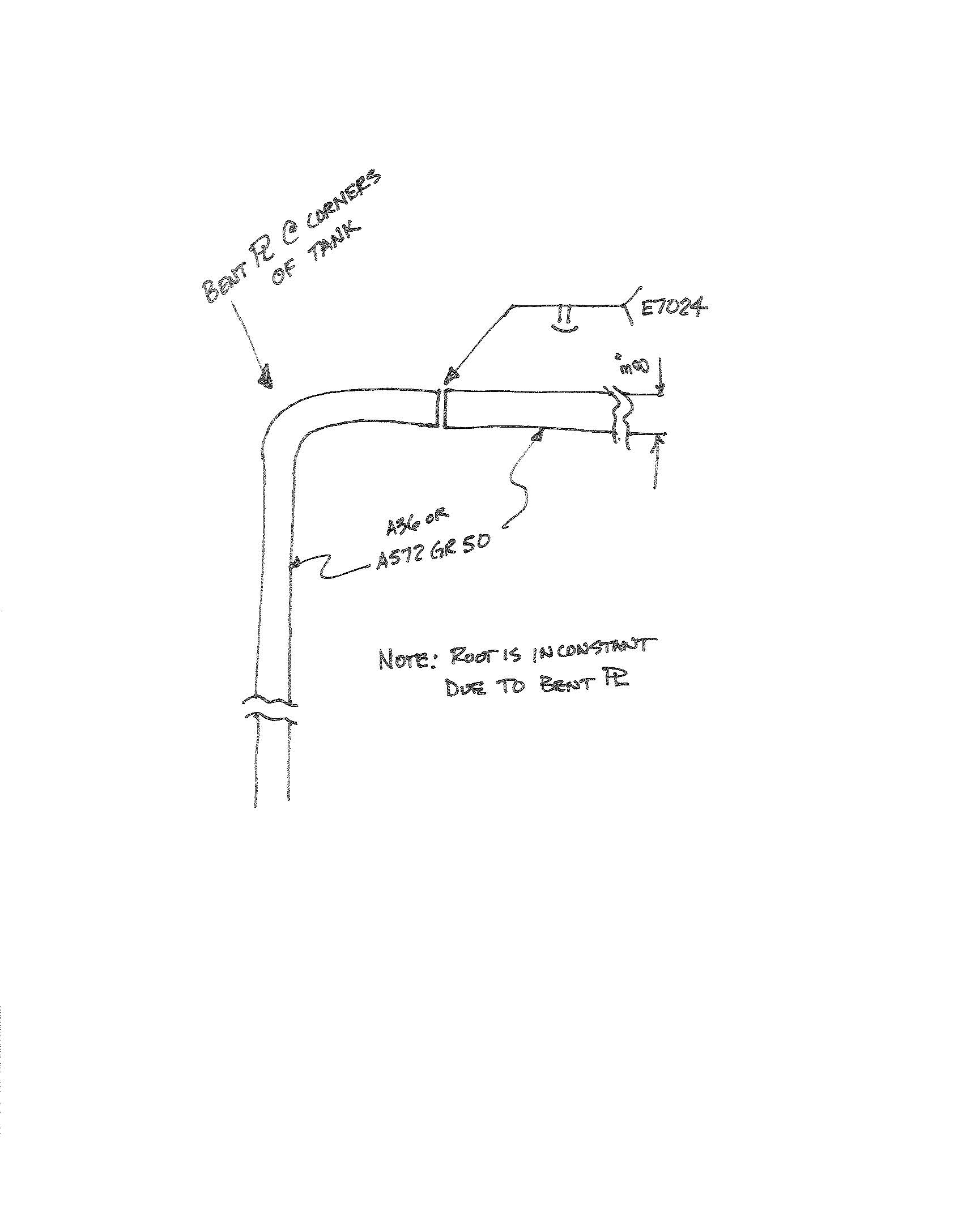
I was trying to help someone develope a few welding procedures (D1.1) to satisfy one of their major customers and I ran up on a situation where I feel isn't per D1.1 perse'.
There is a weld on the fabrication(a very large transformer) that is about 10-12' long, a continuous seam where they have a formed 3/8" bent plate(non-structural so they say) that is square-butted together and welded (on just the outside)"as is" with a 3/16" E7024. They just want to seal this joint, so they have been using an E7024 because of two reasons:
1) fit-up is inconsistant due to the bent plate may or maynot be butted tight at the joint. E7024 accomadates this very well and the cap still looks good compared to a E7018 or E7028.
2) the welders want to use the E7024 for the appearance of the non-ground cap, and they have had porosity issues in the past(due to the poor fit-up) with other methods. This joint has to be 100% leak free because it contains a very thin oil that is used for cooling.
I've gotten them up to speed on everything except this issue. I've suggested two things so far, but I need to research some before continuing any further:
1) qualify the procedure with a PQR (not even sure what is involved until I dig into this one a bit deeper since it isn't lo-hy)
2) cut and etch a sample or two to verify the depth of penetration and get their engineer to sign off and seal this procedure.
Any advice or thoughts?
EDIT: I might add that they have been in business building these transformers for 50 years and have been doing it this way forever.(You guys know what I'm up against here with this one.(reluctance to change is a strong force)



